Know the Futsal Referee Signals
See below all the Futsal Referee Signals. All Signals made by the Futsal referee to referee a match.
In this content you will learn the following signals: Kick-off and Restart, Direct free kick and Penalty kick, Indirect free kick, Indirect free kick, Kick-in Signal, Corner kick, Goal Clearance, Four-Second Count, corner kick, kick -in, Goal clearance, Direct or indirect free kicks, kick off, Penalty kick, Timeout, Yellow and Red Card, Accumulative foul, accumulative foul after advantage, Numbering of the Players and Own goal Signal in Futsal.
Kick-off and Restart of play Signal
The referee signal to Kick-off and Restart of play in Futsal. At the start of each half of play or after a goal has been scored.
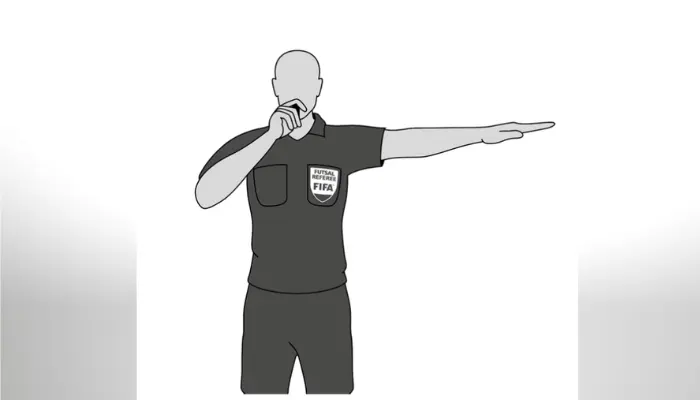
Direct free kick and Penalty kick Signal
Signal for a direct free kick or penalty kick made by the Futsal referee. The hand must point to the side from which the offending team is attacking.
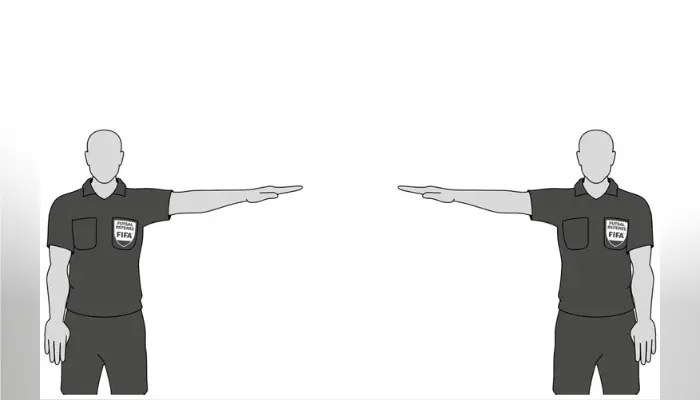
Indirect free kick Signal in Futsal
Indirect free kick signal in Futsal.
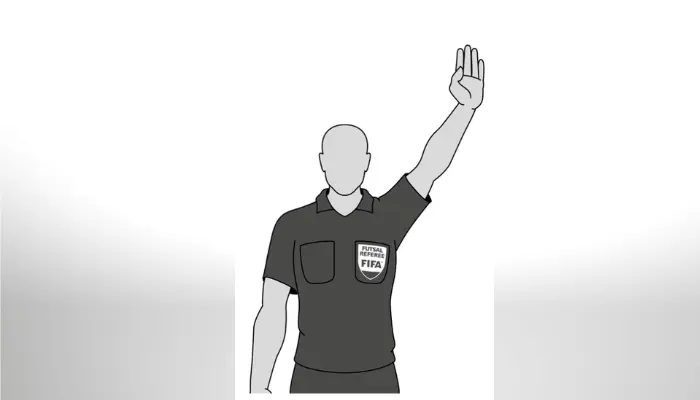
Kick-in Signal in Futsal
Kick-in signal made by the Futsal referee. The hand must point to the side which the offending team is attacking.
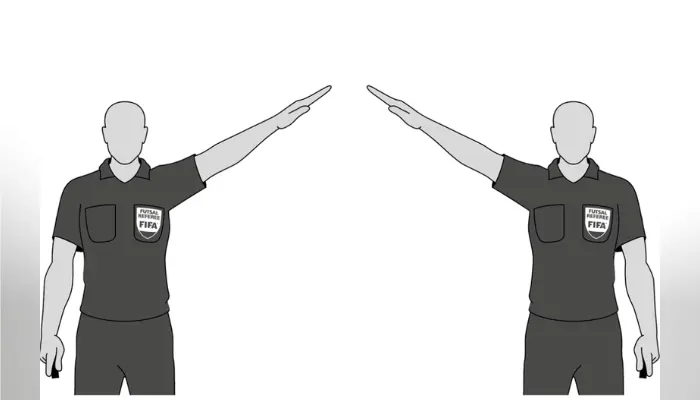
Corner kick Signal in Futsal
Signal made by the Futsal referee to indicate a corner kick. The hand must point towards the quarter-circle from which the corner kick is taken.
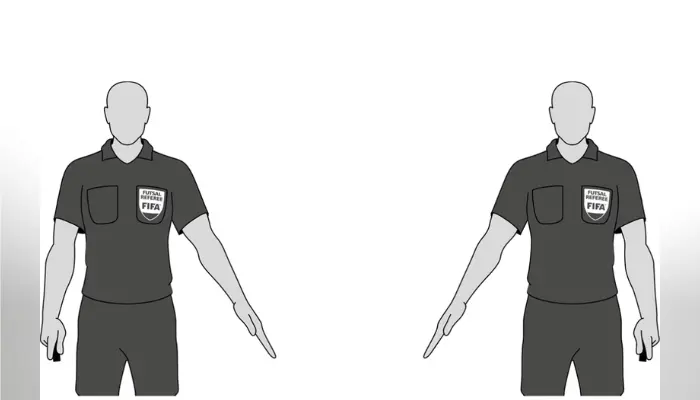
Goal Clearance Signal in Futsal
This is the signal made by the Futsal referee to signal a Goal clearance. The hand must point towards the penalty area of the goalkeeper who is taking the throw-in.
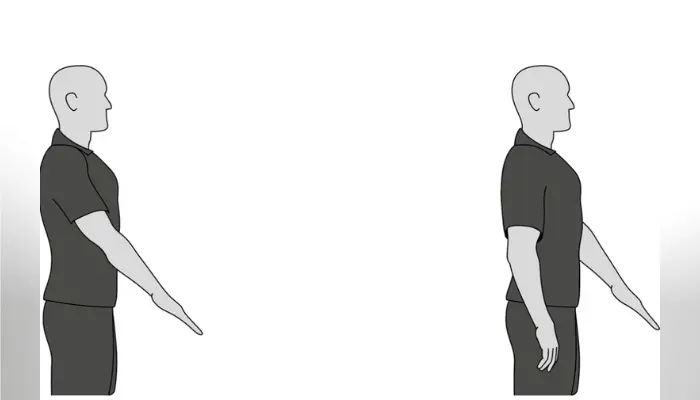
Four-Second Count Signal in Futsal
Signal made by the Futsal referee to Four-Second Count.
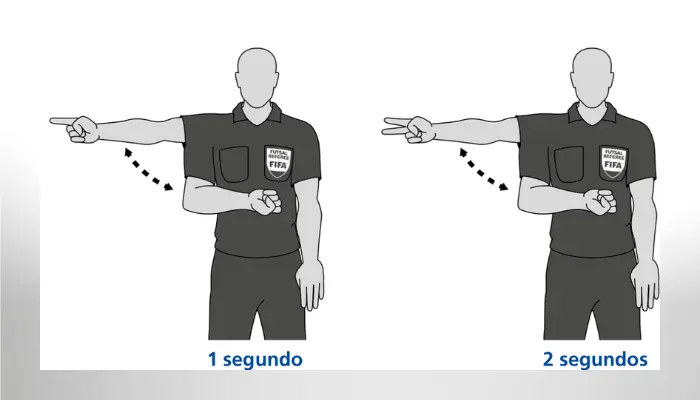
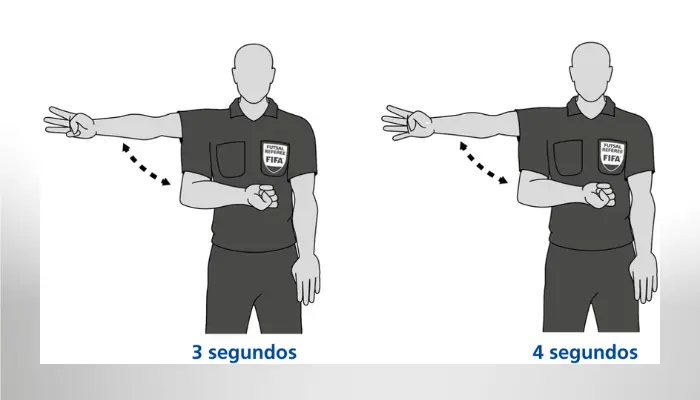
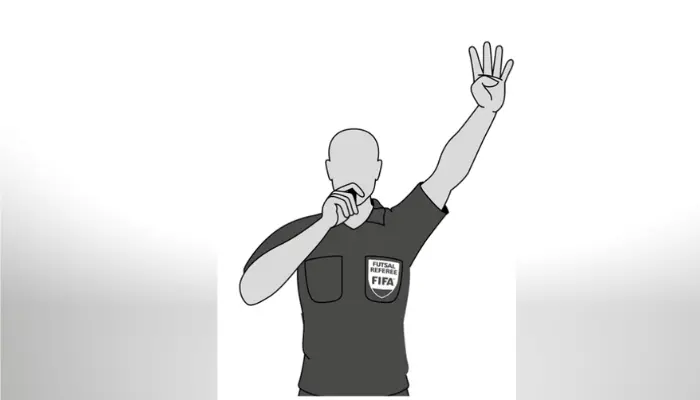
The Four-Second Count must be done in the following situations in the game:
- Corner kick;
- kick-in;
- Goal clearance;
- Direct or indirect free kicks, including the sixth cumulative foul;
- When the goalkeeper controls the ball in his own half of the court.
Futsal referees do not open a Four-Second Count for the following situations:
- kick off;
- Penalty kick.
Fifth accumulated foul Signal in Futsal
Signalling made by the Futsal referee indicating the Fifth accumulated foul committed by a team.
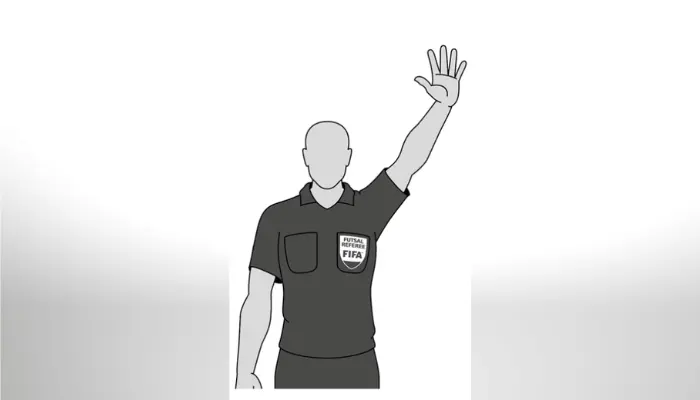
Timeout Signal in Futsal
Signal made by the Futsal referee indicating a Timeout.
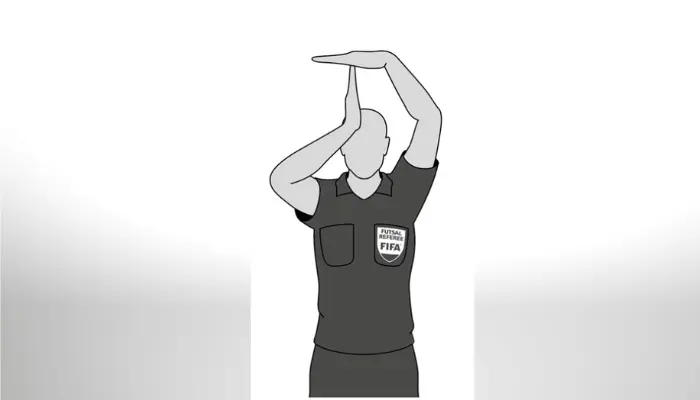
Advantage Signal in Futsal
Signalling an advantage in Futsal for direct free kicks and indirect free kicks.
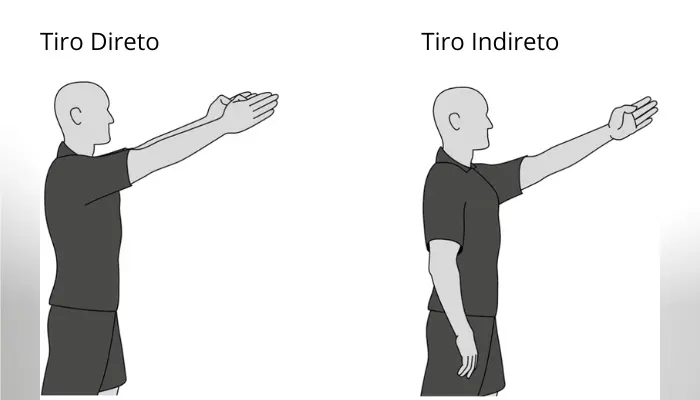
Yellow and Red Card Signal in Futsal
Yellow (Caution) and red card (Sending-off) signal in Futsal.
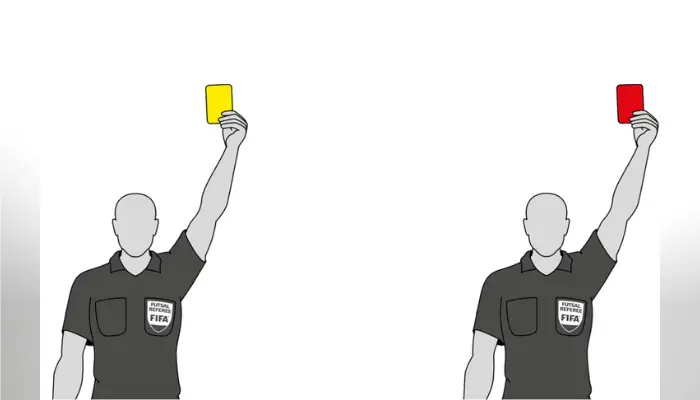
Accumulative foul Signal after Advantage in Futsal
Signalling an accumulative foul after advantage in Futsal.
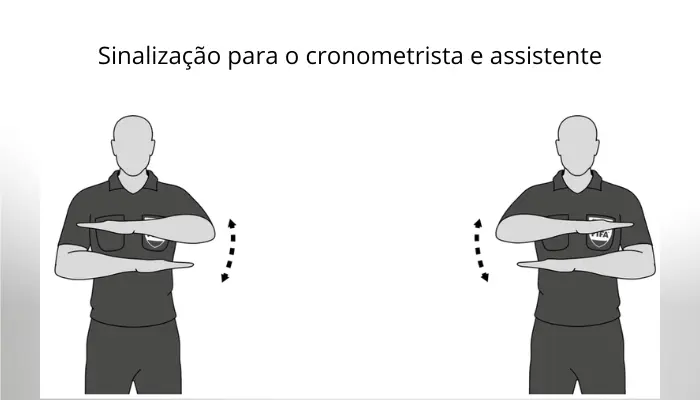
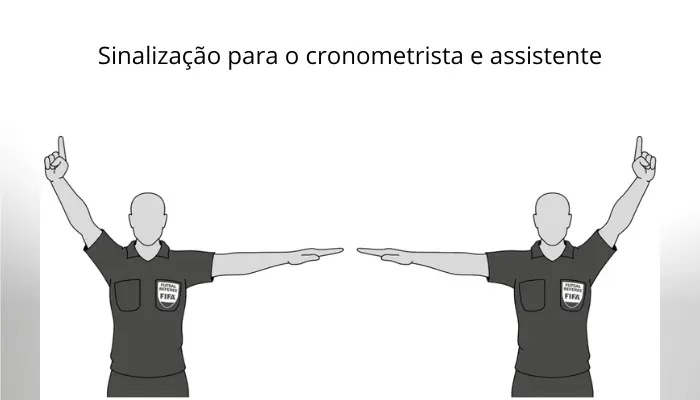
Signal of the Numbering of the Players in Futsal
A signal made by the Futsal referee to indicate the shirt number of the player who scored the goal.
Up to number 15 the signalling is done in a single gesture:
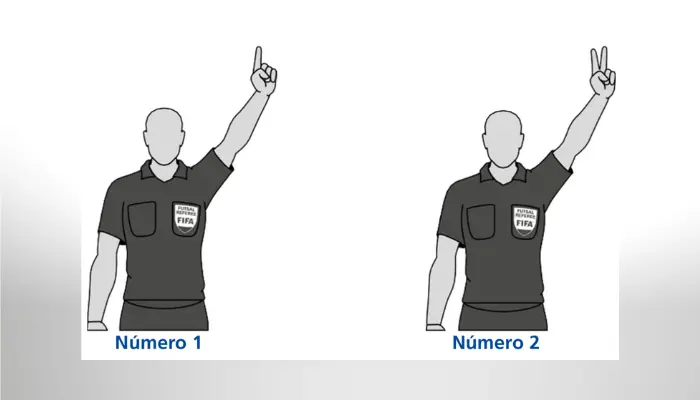
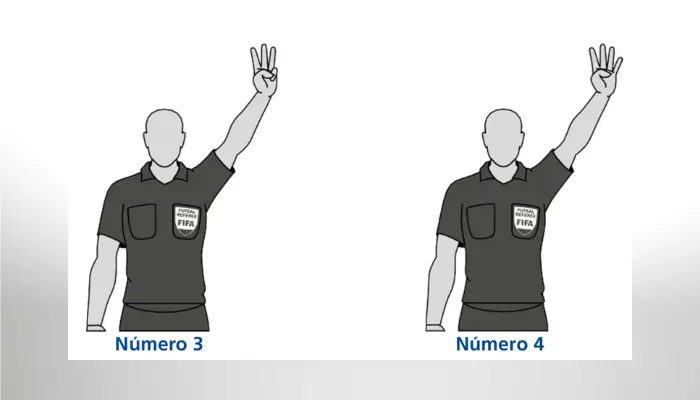
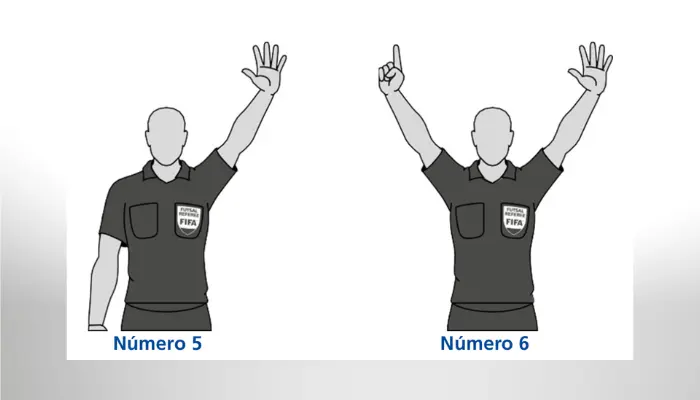

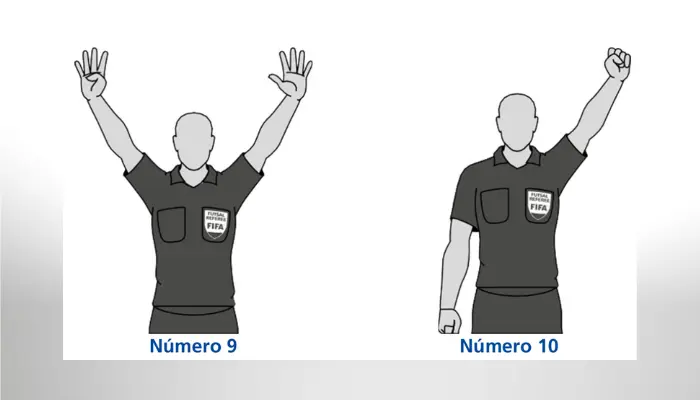
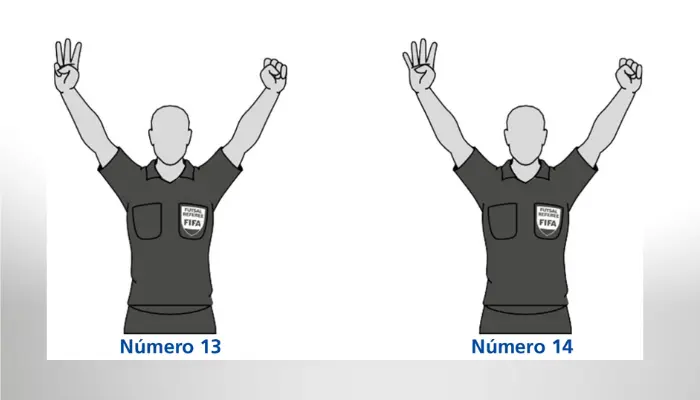
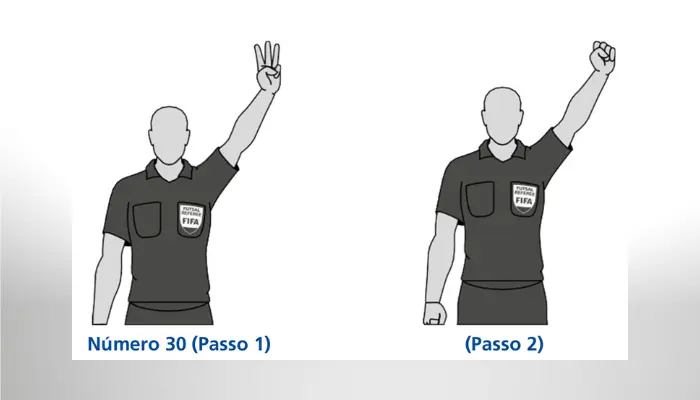
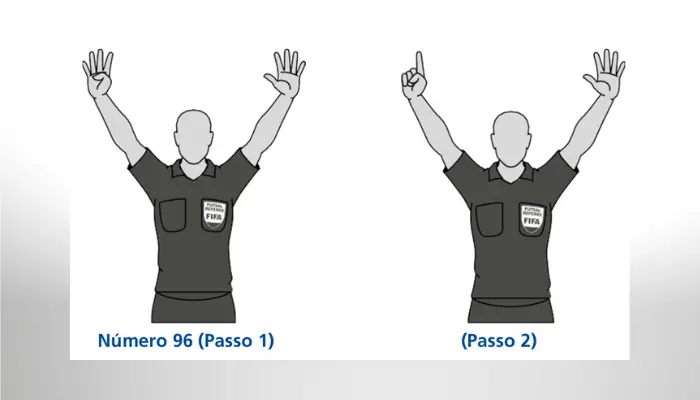
Own goal Signal in Futsal
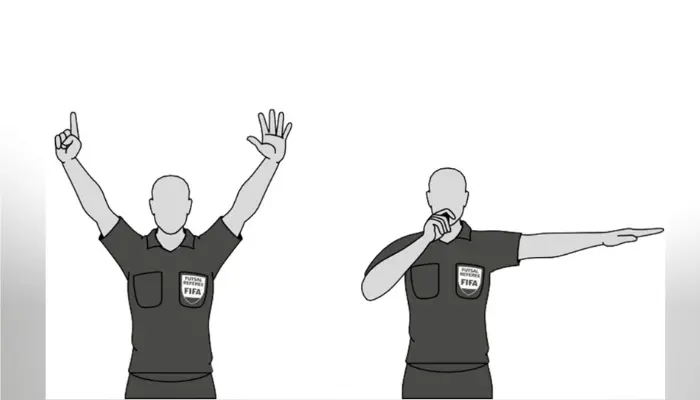
The referee signals an own goal in futsal. The number of the player who scored an own goal is indicated first and then the hand with the arm extended towards the technical area of the team that conceded the goal.
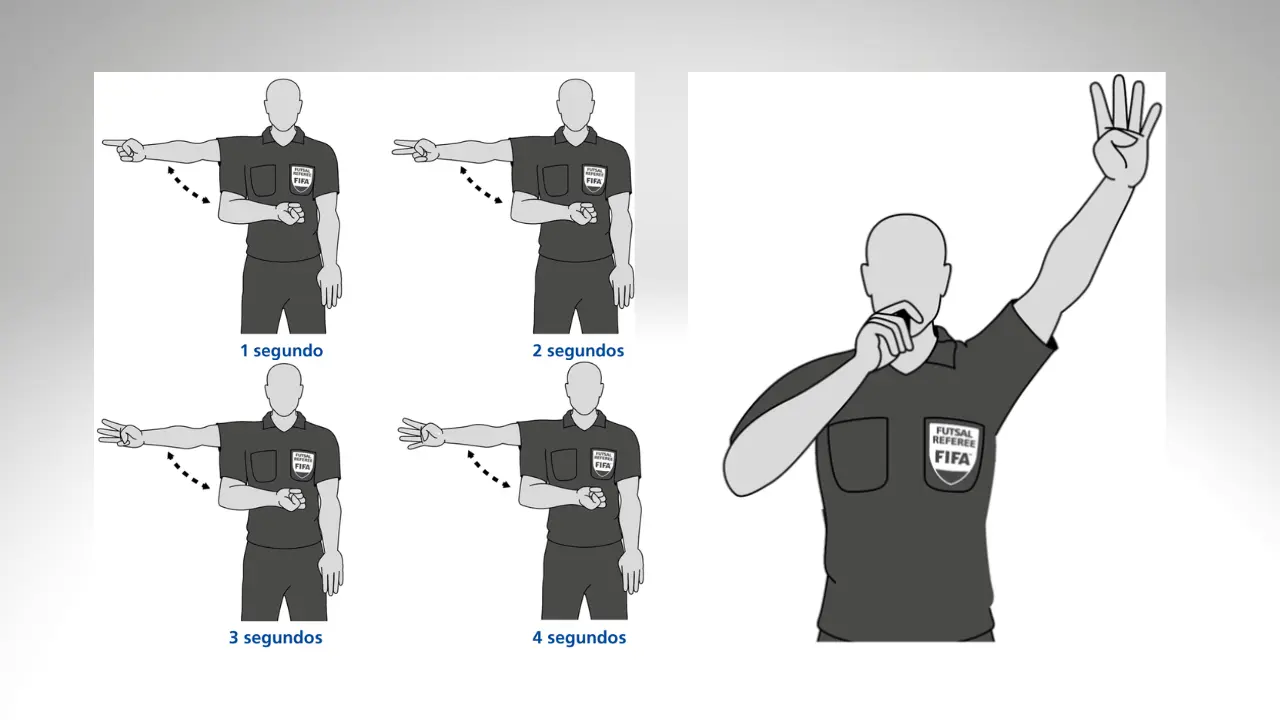
You’ve written this well. I learned more about futsal referee signals. Keep on posting.